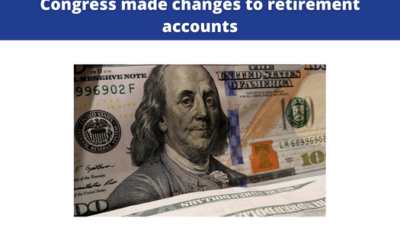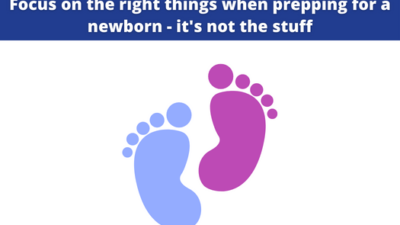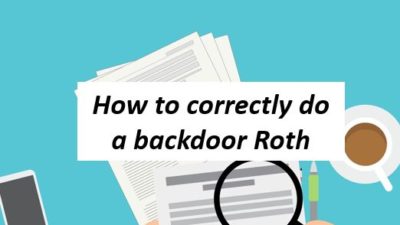It is a very common misconception that once we put money away for retirement into retirement accounts (such as 401k, IRAs) we can’t get the money before turning 59.5. In fact, I’ll show you why that belief is not even true, and how there are some excellent workarounds for those who wish to retire early.
It’s not that you cannot take out your money before age 59.5, but rather, that you may be subject to something called early withdrawal penalty. Early withdrawal penalty is a 10% fee charged on most withdrawals taken before age 59.5 in retirement accounts.However, these are some common exceptions which are often used by early retirement people:
Roth IRA
With a Roth IRA, any contributions can be withdrawn without penalty at any time. Since you’ve already paid income taxes on the contributions, that is the main reason why you are able to withdraw the funds easily. However, any growth (interest and dividends on your investments, as well as increases in stock prices), have not been taxed yet, so those would be subject to income tax as well as a 10% early withdrawal penalty, if withdrawn early.
Example:
- You contribute $500 to a Roth IRA in 2022
- In 2023, the account is worth $550
- You can withdraw $500 ( original contribution) without a tax penalty, but if you withdraw the full $550, you’d pay income tax and a 10% penalty on the $50 of growth
A converted Roth IRA
At any point in your life, you have the ability to convert a traditional IRA or a traditional rollover IRA to a Roth IRA. People often do this strategically during low-tax-bracket years or to take advantage of a Roth conversion ladder (to be covered in the next paragraph). In the year of conversion, you pay taxes on the total amount that is converted. Most people use money they have outside of the accounts, because if you use money inside the converted IRA, you’re paying a penalty as you do so. After 5 years, the money that you originally converted, can also be withdrawn without penalty. Same concept as above applies here, the growth on the initial conversion is still subject to taxes and a penalty if withdrawn before age 59.5.
Roth conversion ladder
A Roth conversion ladder builds on conversions, and is a fancy workaround early retirement people use to withdraw retirement funds before age 59.5. As mentioned in the previous paragraph, any money converted to a Roth IRA needs to stay in the Roth for 5 years before it can be withdrawn without tax or penalty. So for someone who wants to retire early and needs money every year, this is where the ladder comes into play.
Typically, in a Roth conversion ladder, one converts a year’s worth of living expenses every year. This helps lower your taxable income each year as you’d be only paying income taxes on a year’s worth of expenses instead of a larger lump sum. After 5 years, you withdraw the first Roth conversion to live off of. After 6 years, you withdraw from the 2nd conversion. So on and so forth.
Example:
- You wish to retire at age 50 and need $40,000 a year in living expenses
- At age 45, you convert $40,000 from a traditional IRA to a Roth IRA
- That same year, you will pay income taxes on an additional $40,000 income
- You wait 5 years. Now, at age 50 you can now withdraw that $40,000 without tax or penalty
- You continue to convert $40,000 each year knowing that each contribution can be withdrawn after 5 years.
- This strategy would keep your early retirement funded until you reach 59.5 when you can withdraw from all accounts without penalty.
457(b)
A 457(b) is another employer sponsored retirement plan common among federal and non-profit employees. Do not confuse this with a 457(f) which is an employer sponsored retirement plan for some highly compensated employees. If you are eligible for this type of plan, the restrictions are a bit more lax in terms of withdrawals. Generally you can withdraw from these accounts without being subject to early withdrawal penalty at any time, after leaving employment with the employer.
Rule 72(t) withdrawals
The IRS offers another option for early withdrawal of retirement funds to avoid the early withdrawal penalty. Rule 72(t) allows one to take 5 “substantially equal periodic payments” (SEPPs) from retirement accounts. The math to determine how much these payments can be utilizes 1 of 3 IRS approved methods. You must take all 5 payments, and if you make any changes to it, you might negate the method and end up owing taxes and fees. As this route is a bit complex and personal to your situation, my recommendation is to hire a CPA to walk you through this.
Taxable brokerage
A taxable brokerage account is not uncommon for those of us that have significant retirement assets. Once I have funded all of my available tax advantaged retirement accounts and I still have money to invest, I would contribute it to a taxable brokerage account.
Think of this account more like a savings account that allows you to invest. You can own mutual funds, stocks, bonds, etc in this account, just like our other retirement accounts, but you can withdraw funds at any time without an early withdrawal penalty. These accounts are designed for general purpose, so money can be transferred in and out quickly, but depending on the activity of our investments within the account, there may be income tax implications to be aware of (such as short term capital gains taxes and long terms capital gains taxes, which will be explained in a different blog post).
In closing
We should not let early withdrawal penalties stop us from investing in tax advantaged retirement accounts right now, even if early retirement is the goal. The benefits of investing for the long term along with tax-free compounding interest far outweigh the withdrawal restrictions. I hope I have shown here that there are exceptions and workarounds to withdrawing money if needed. If early retirement is a goal, then pre-planning and understanding our accounts can make a huge difference.
If you found this interesting and would like more details on the U.S. retirement system, tax advantaged accounts and how best to plan for early retirement, join my mailing list to nab a spot in my Save My Retirement Masterclass.










